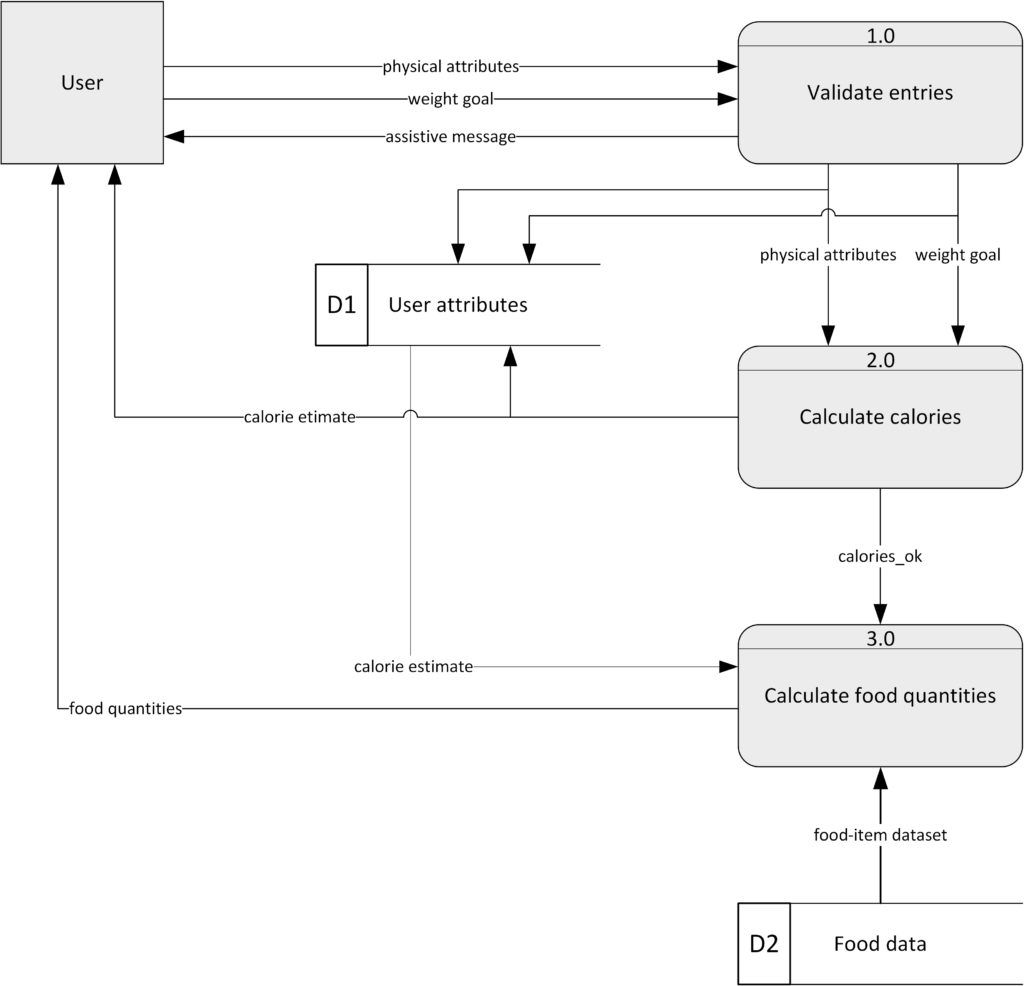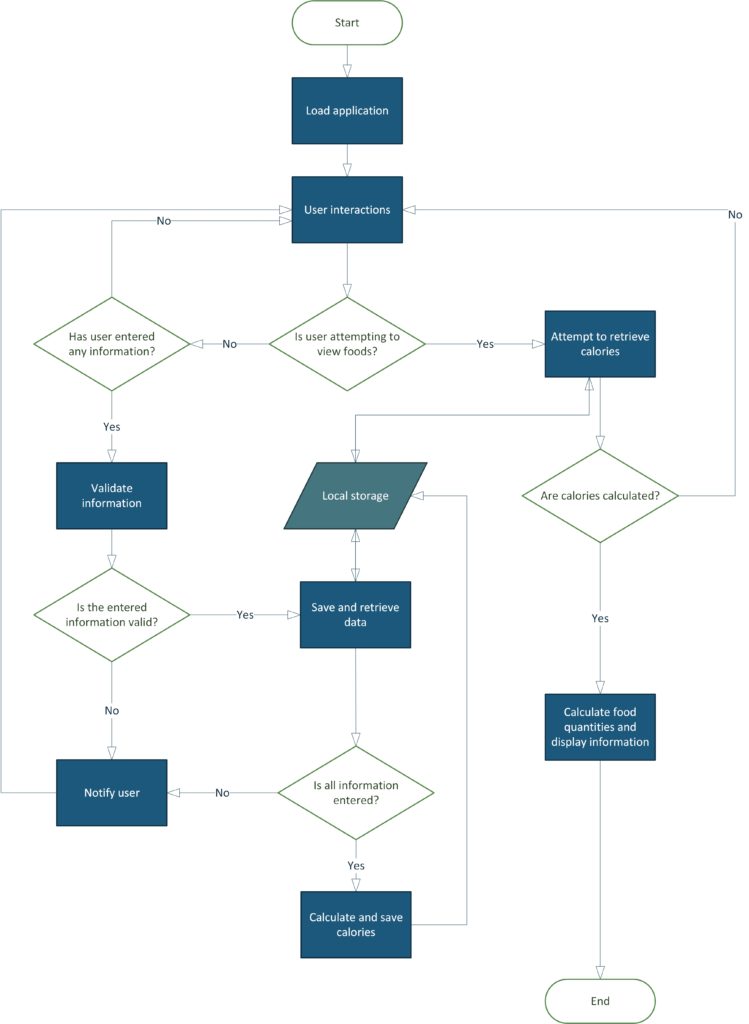Dietary factors could play a harmful or protective role in the case of chronic conditions [1], cancer risk [2] and even mental health [3]. However, research suggests that exploring generally healthful dietary information could be a complicated process, given the diverse array of evolving and widely available information, as well as aspects of diet that vary from one person to another. [4], In this regard, mobile nutrition applications have the potential to convey dietary knowledge in a convenient and scalable manner. [5] Yet, according to S. Scerri et al. [6], they could be pedantic and counter-productive if a burden is placed on the user.

This study examines dietary research, mobile nutrition and application-design concepts for developing and evaluating a mobile diet application with simplicity, and the facilitation of making healthy food choices in mind. The overarching methodology was influenced by the waterfall software development model. This entails surveying before designing the application, subsequently undertaking user- acceptance testing (UAT) to test and evaluate the application after its implementation. Both the survey and UAT targeted University of Malta staff and students, although the survey also targeted Junior College staff.
The application itself seeks to provide a healthy Mediterranean diet, using an underlying deterministic model.

The developed deterministic model behind the application utilises several user attributes and a weight goal to obtain a caloric estimate, towards subsequently calculating food quantities of eight different food groups according to the user’s estimated calories and the compiled Mediterranean- diet food distribution and food dataset. The design of the application was influenced by Material Design for Android, with particular attention to simplicity, user experience, and the promotion of healthy food choices. The application is evaluated primarily according to these criteria. While aiming to facilitate the choice of healthy foods, the application does not seek to be tailor-made for users from a medical point of view and does not capture medical information.
According to the initial evaluation, the application was expected to be well-received, and the UAT findings did indeed present the application in a positive light (SUS score of 87.5 ± 8.75 at 99.9% confidence interval places the application in the upper quartile [7]). The majority of UAT participants preferred the developed application over others that expect constant and precise food inputs, and each of the nine participants responded in the affirmative when asked about the likelihood of using it.
References/Bibliography:
[1] A. Afshin et al., “Health effects of dietary risks in 195 countries, 1990–2017: a systematic analysis for the Global Burden of Disease Study 2017,” The Lancet, vol. 393, (10184), pp. 1958-1972, 2019. Available: https://www.sciencedirect.com/science/article/ pii/S0140673619300418. DOI: 10.1016/S0140- 6736(19)30041-8
[2] WHO, “Diet, nutrition and the prevention of chronic diseases,” World Health Organization Technical Report Series, vol. 916, pp. i, 2003. Available: https://www.ncbi.nlm.nih.gov/pubmed/12768890.
[3] E. Frazão, “High costs of poor eating patterns in the united states,” in America’s Eating Habits: Changes and Consequences, USDA Economic Research Service, 1999, pp. 5-32.
[4] C. M. Pollard et al., “Who Uses the Internet as a Source of Nutrition and Dietary Information? An Australian Population Perspective,” Journal of Medical Internet Research, vol. 17, (8), pp. e209, 2015. Available: https://www.ncbi.nlm.nih.gov/ pubmed/26310192. DOI: 10.2196/jmir.4548.
[5] J. Rivera et al, “Mobile Apps for Weight Management: A Scoping Review,” JMIR mHealth and uHealth, vol. 4, (3), pp. e87, 2016. Available: https://www.ncbi.nlm.nih.gov/pubmed/27460502. DOI: 10.2196/mhealth.5115.
[6] S. Scerri et al., “Understanding human-device interaction patterns within the context of mobile nutrition,” in Dec 2015, pp. 1-7.
[7] A. Bangor, P. T. Kortum and J. T. Miller, “An Empirical Evaluation of the System Usability Scale,” International Journal of Human- Computer Interaction, vol. 24, (6), pp. 574-594, 2008. Available:
Student: Luka Djincharadze
Course: B.Sc. IT (Hons.) Computing and Business
Supervisor: Dr. Lalit Garg
